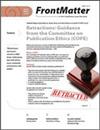吉拉河两条源头支流原生鱼类对严重山火的不同反应
IF 0.5
4区 环境科学与生态学
Q4 BIODIVERSITY CONSERVATION
引用次数: 0
摘要
摘要高度严重的野火在美国西南部变得越来越普遍,了解这些火灾如何影响当地生物对它们的保护至关重要。我们对新墨西哥州吉拉河的两条支流进行了7年和23年的鱼类密度和栖息地变化评估,这些支流经历了大型野火。2011年,米勒大火影响了小溪,随后发生了中度季风性洪水。2013年,“银火”影响了黑峡谷,随后发生了一场大型季风性洪水。这两条源头对野火的反应不同。黑峡谷火灾后沉积物的涌入使河流深度减少了59%,细底物增加了51%,而小溪火灾后这些参数相对不变。在黑峡谷发生野火和季风性洪水后,本地鱼类密度立即降至零,恢复缓慢(约8年)。相比之下,小溪鱼的密度在野火后略有下降,并在一年内恢复到接近火灾前的水平。这两个地点对野火的响应说明了野火特征、流域特征和野火后降水事件的相互作用如何影响野火干扰对河流生态系统的影响。本文章由计算机程序翻译,如有差异,请以英文原文为准。
Differential Responses of Native Fishes in Two Headwater Tributaries of the Gila River Following Severe Wildfires
Abstract. High-severity wildfires are becoming increasingly common across the American Southwest, and knowledge of how these fires affect native organisms is essential for their conservation. We evaluated changes in fish densities and habitat over 7 and 23 years in 2 tributaries of the Gila River, New Mexico, that experienced large wildfires. The Miller Fire affected Little Creek in 2011 and was followed by moderate monsoonal flooding. The Silver Fire affected Black Canyon in 2013 and was followed by a large monsoonal flood. These 2 headwater streams responded differently to wildfire. Influx of sediments reduced stream depth by 59% and increased fine substrates by 51% following the fire in Black Canyon, while these parameters were relatively unchanged by fire in Little Creek. Native fish densities declined to zero immediately following the wildfire and monsoonal flooding in Black Canyon, and recovery was slow (∼8 years). In contrast, Little Creek fish density declined marginally following wildfires and returned to near prefire levels within one year. The response to wildfires at these 2 locations illustrates how the interaction of wildfire characteristics, catchment features, and post-wildfire precipitation events influence the impact of wildfire disturbance of stream ecosystems.
求助全文
通过发布文献求助,成功后即可免费获取论文全文。
去求助
来源期刊

Western North American Naturalist
环境科学-生态学
CiteScore
0.90
自引率
16.70%
发文量
39
审稿时长
>36 weeks
期刊介绍:
The Western North American Naturalist places neither restriction nor preference on manuscripts within the disciplines of the biological sciences. Each issue treats diverse taxa from the perspectives of various disciplines (e.g., ecology, population dynamics, behavior, systematics, anatomy, and physiology).
 求助内容:
求助内容: 应助结果提醒方式:
应助结果提醒方式:


